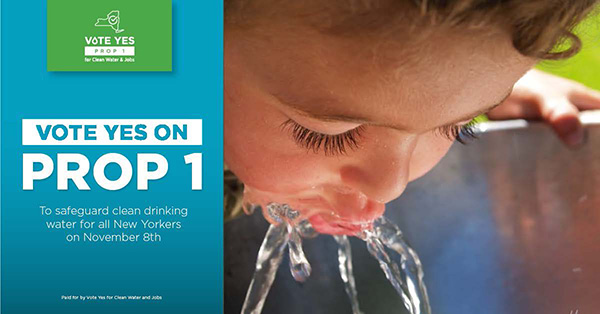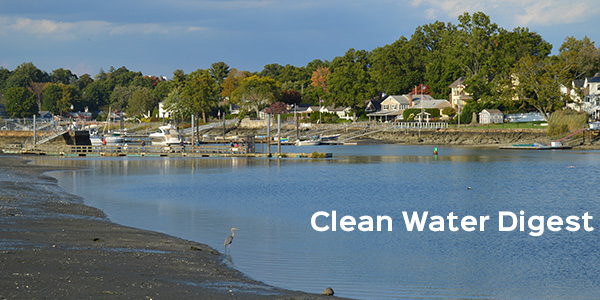
Each Wednesday, we bring you an update on one of our program areas. This week: Clean Water. Read other recent updates on our blog.
“In youth,” wrote 19th-century humorist Josh Billings, “we run into difficulties. In old age, difficulties run into us.”
For the Clean Water Act, which celebrates its 50th birthday next Tuesday, difficulty presents as a real danger: a case currently before the Supreme Court that threatens to kneecap its ability to protect the waters of the United States.
The case—Sackett vs. Environmental Protection Agency, heard early on the docket the first day of the new SCOTUS session—hinges on the definition of “the waters of the United States,” which are the waters protected by the Clean Water Act. The Pacific Legal Foundation, a nonprofit group that works nationwide to roll back environmental protections, is representing homeowners seeking to eliminate Clean Water Act protections that have applied to most wetlands and streams since 1977. While in oral argument a majority of the justices expressed at least some skepticism toward this radical approach, it is very much undecided what test will be applied and which wetlands will ultimately will remain protected under federal law.
“Wetlands provide many essential functions and values, such as natural water quality improvement, fish and wildlife habits, flood protection, and shoreline stabilization,” said Roger Reynolds, our senior legal counsel. “We also know they are some of the most productive ecosystems in the world, providing similar functions to coral reefs and rain forests. Because of their water quality benefits, they have been protected under the Clean Water Act since 1977.”
“Another overlooked aspect of wetlands is their ability to slowly release water into streams maintaining base flows during critical drought periods, which are predicted to increase as the planet warms,” said Long Island Soundkeeper Bill Lucey, noting that a big part of the WOTUS function is protecting all the small wetlands, feeder streams, and intermittent channels as part of the overall health of a watershed.
Save the Sound has used a wide variety of federal and state laws in addition to the Clean Water Act to protect key wetland resources. We fought for a decade under state and local law to permanently protect a 1,000-acre coastal forest known as The Preserve in Old Saybrook, CT, based upon the damage the proposed development would have done to the property’s 114 acres of wetlands and the functions and services they provided. Plum Island, which we successfully removed from the federal auction block through Congressional action, has 96 acres of freshwater wetlands that support a great diversity of wildlife. While Connecticut and New York have their own strong wetlands protections, these are generally administered at the local level, and federal law serves as an important minimum level of protection and backup if state or local government falls short.
Where SCOTUS lands on the Sackett case will impact more than the small parcel in Idaho where the Sacketts reside. Natural Resources Defense Council has estimated the decision could affect federal protection for 51% of wetlands in the U.S. and 9% of rivers.
“We will hope that the court comes to a workable consensus to federally protect wetlands under the Clean Water Act,” said Roger. “Whatever the outcome, we will continue fighting—and winning—to protect wetlands for the benefit of the wetlands themselves, rivers, lakes, and ultimately Long Island Sound.” To learn more about the ways the Clean Water Act has fueled Save the Sound’s work, check out our regular monthly dispatch in the October issue of WindCheck Magazine.
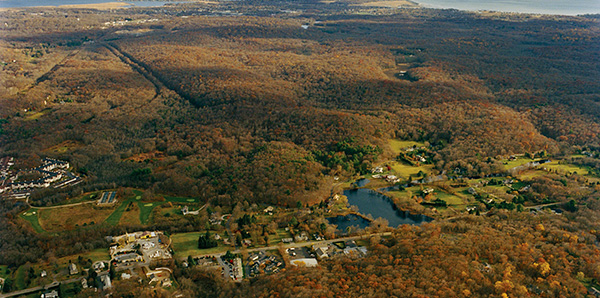
How Do You Use the Western Sound?
While we’re on the subject of how the waters of the United States may be used . . .
As a result of a lawsuit we filed against EPA claiming that water quality standards applying to New York City waters failed to adequately safeguard public health, New York State Department of Environmental Conservation (NYSDEC) is undergoing a process beginning with documenting the recreational uses of the saline waters of New York City and other portions of New York. Please take a moment to visit our interactive map and share how you use the East River (specifically the section in the westernmost portion of Long Island Sound). We’ll share your answers with New York City, New York State, and EPA to achieve the strongest possible water quality protections. We also encourage you to share information about your use of other saline waters in New York.
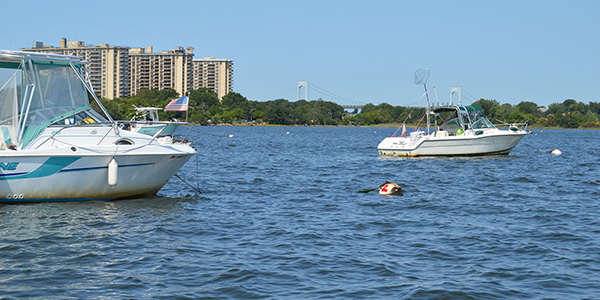
Grade Expectations
We’re finalizing grades and preparing to release the 2022 Long Island Report Card in just a few short weeks. Our biennial report tracks the ecological health of Long Island Sound, both in the open waters and in individual bays and harbors around the Sound. Stay tuned!
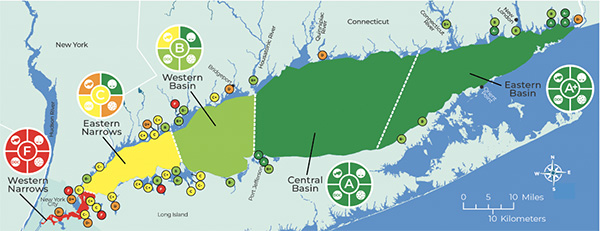
The Senator and the Scientist
Did you happen to catch the item in our Clean Water Digest from July 28 featuring high school senior Delia Bajuk, who was launching her water quality monitoring project in a section of Blind Brook that runs through a corner of her Rye High School campus? New York State senator Shelley Mayer did and was so inspired that she wanted to meet this enterprising community scientist.
Delia and Senator Mayer connected recently at our Larchmont office. They talked together at length, along with some Save the Sound staff, about water quality, about green infrastructure, about the gamechanger Hurricane Ida was in Westchester County, and of course about how the data Delia’s collecting over the next year will help inform whether an old, derelict dam at the site should be removed.
“I was motivated by your initiative and leadership,” Senator Mayer told Delia. “You’re so impressive.”
We agree!
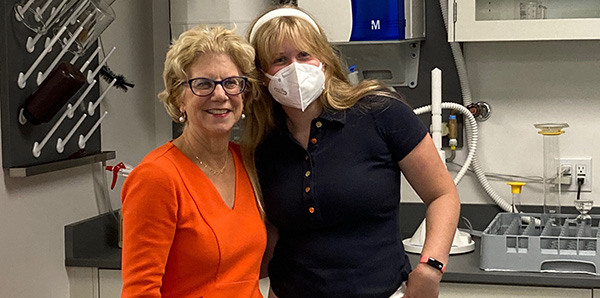
Save the Dates
- Marine Meadows Workshop: Join UConn’s Dr. Craig Tobias, Dr. Jamie Vaudrey, and Shannon Jordan to help assemble planting units for an eelgrass restoration experiment. Wednesday, Oct. 19, 11:00 a.m.-1:00 p.m., Three Belles Outfitters, Niantic, CT.
- Funding and Strategies to Tackle Local Water Pollution: Register now for the inaugural Long Island Sound Summit 2022, presented by the Long Island Sound Coastal Watershed Network. Wednesday, Nov. 2, 10:30 a.m.-2:45 p.m., Village Center, Port Jefferson, NY.
Clean Drinking Water is on the Ballot in New York
On Nov. 8, New Yorkers will head to the polls and cast their votes in favor of clean water, clean air, and green jobs. Media outlets, such as Newsday, have endorsed the Environmental Bond Act, which would invest $4.2 billion into New York’s environmental infrastructure and safeguard, among other things, everyone’s priority: clean drinking water. And municipalities around the state are passing resolutions in favor of the Bond Act (big shout-out to the Town of Mamaroneck, the first Sound Shore community to do so!)
